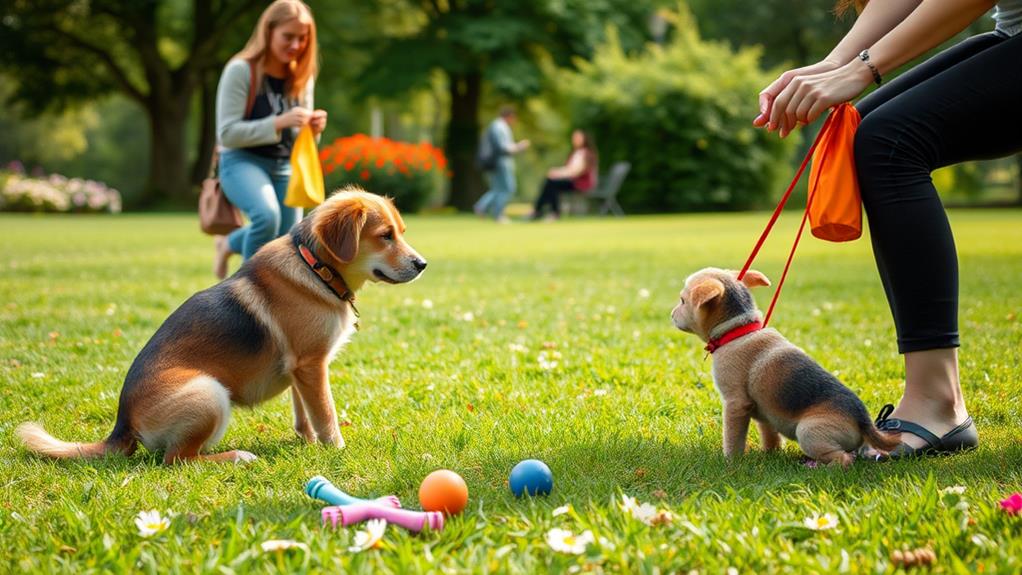To help your shy dog thrive, start by creating a safe environment where they can retreat when feeling overwhelmed. Use gradual exposure techniques, introducing new sights and sounds in familiar settings. Pair these experiences with treats to build positive associations. Employ positive reinforcement to encourage curiosity and calmness, rewarding your dog for each small step forward. When socializing with other dogs, choose calm companions and monitor interactions closely. Consistent practice will boost your dog's confidence and comfort in various situations. There's plenty more to discover about these strategies that can make a huge difference in your dog's life.
Understanding Shyness in Dogs
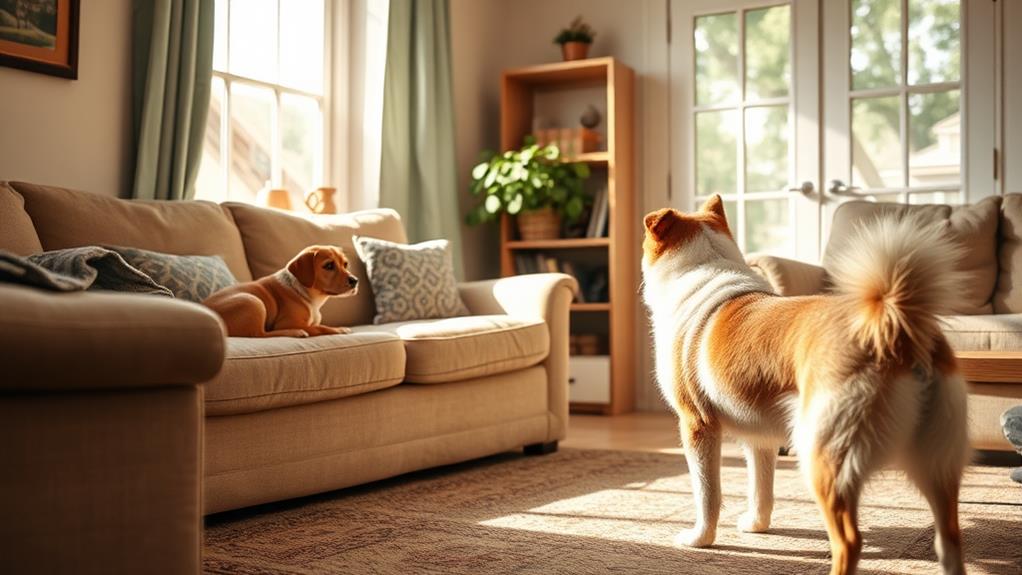
Understanding shyness in dogs requires recognizing that it often stems from a combination of genetics, early experiences, and socialization levels. Some dogs are naturally more timid due to their genetic makeup, while others may develop shyness from negative encounters or a lack of exposure to various environments and people during their critical developmental stages.
When you meet a shy dog, it's vital to remember that their behavior isn't a reflection of their potential. Instead, it's a response to their past and how they perceive the world around them. You might notice that shy dogs often display avoidance behaviors, like hiding or retreating when faced with new situations or individuals. They might also exhibit signs of anxiety, such as whining or pacing.
Your role in understanding this behavior is pivotal. By being patient and observant, you can help your dog navigate their fears. Recognize their body language and give them the space they need to feel comfortable. By doing so, you can create a foundation for positive interactions, which will ultimately build their confidence and help them thrive in various social settings.
Building a Safe Environment
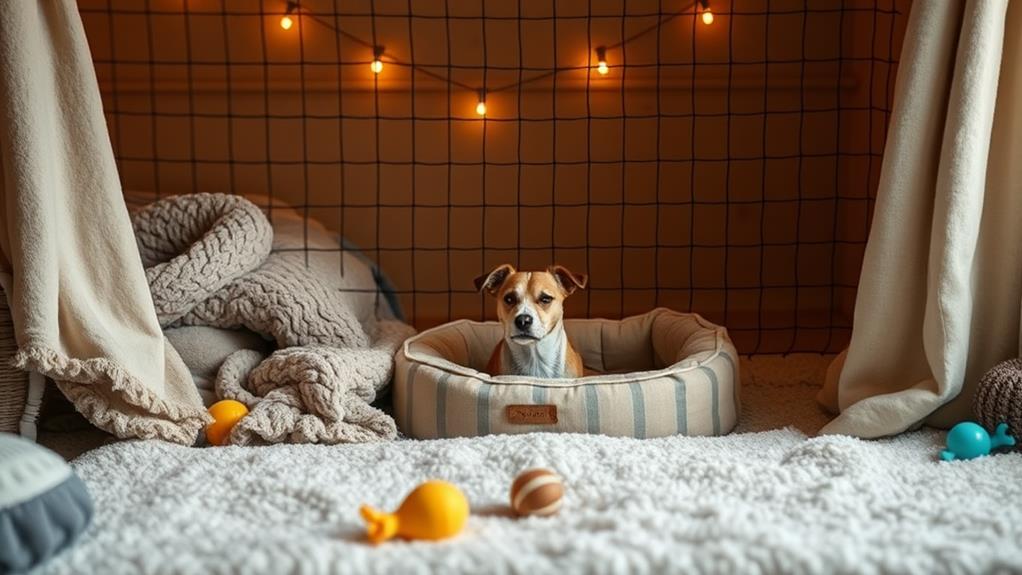
Creating a safe environment for your shy dog is essential for their comfort and confidence. Start by establishing a designated space where your dog can retreat when they feel overwhelmed. This could be a cozy bed or a crate with familiar blankets and toys. Make sure it's quiet and away from high-traffic areas, so they feel secure.
Next, minimize sudden noises and disruptions in your home. Use white noise machines or calming music to help drown out unsettling sounds. If you have visitors, consider using baby gates to create a barrier, allowing your dog to observe from a distance without feeling trapped.
Consistency is key. Stick to a routine for feeding, walks, and playtime to give your dog predictability in their day. This stability helps reduce anxiety and builds trust in their environment.
Lastly, be mindful of your dog's body language. If they show signs of stress, like yawning or cowering, give them space and allow them to approach you when they're ready. By fostering a calm and secure atmosphere, you'll help your shy dog feel more at ease and open to social interactions.
Gradual Exposure Techniques
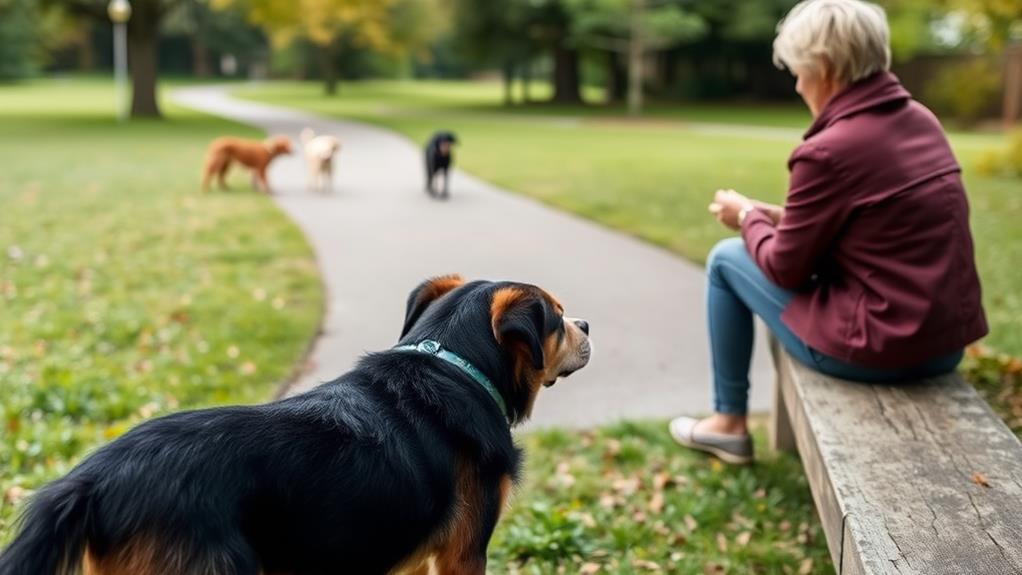
Once your shy dog feels secure in their environment, it's time to introduce them to new experiences through gradual exposure techniques. This method helps your dog build confidence and reduces anxiety by allowing them to acclimate to new stimuli at their own pace.
Start by identifying situations that might overwhelm your dog. Then, break these experiences into smaller, manageable steps. Here are some strategies to ponder:
- Controlled Environments: Begin in a familiar setting where your dog feels at ease, gradually introducing them to new sights, sounds, or smells.
- Short Intervals: Limit exposure time to new experiences initially. For example, allow your dog to observe a new person or pet from a distance before getting closer.
- Positive Associations: Pair each new experience with something your dog enjoys, like treats or playtime, to create a positive connection.
Positive Reinforcement Methods
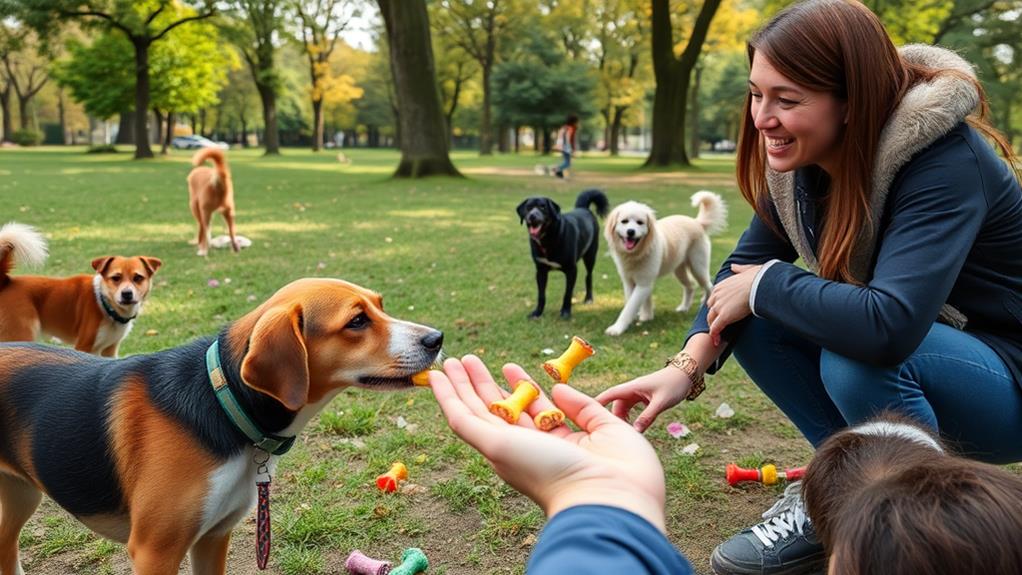
Positive reinforcement methods are key in helping your shy dog gain confidence and feel more comfortable in new situations. By rewarding your dog for positive behavior, you encourage them to repeat those actions. Start by identifying what motivates your dog, whether it's treats, toys, or praise.
When you introduce your dog to new environments or experiences, reward them immediately when they show curiosity or calmness. For instance, if they approach a new person or explore a new area, offer a treat or verbal praise. This positive association will help them link the experience with something enjoyable.
Consistency is indispensable. Make sure you reward your dog every time they display desired behavior during socialization. Over time, gradually increase the challenge by introducing more stimuli while continuing to reinforce their courage with rewards.
Socialization With Other Dogs
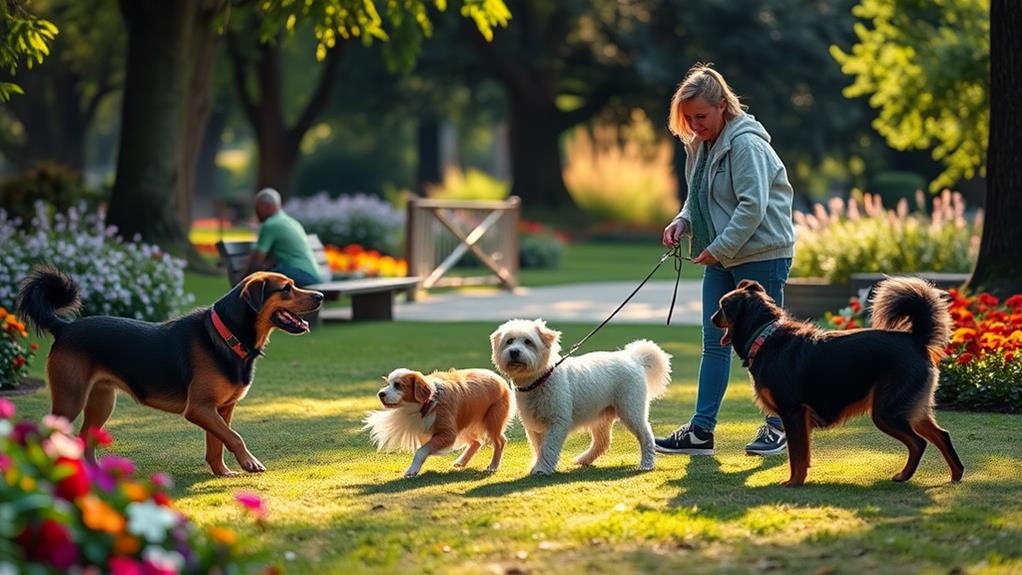
Many shy dogs benefit greatly from socialization with other dogs, as it can help them build confidence and learn appropriate behaviors. Engaging with fellow canines allows your dog to practice communication skills and understand social cues.
To guarantee a positive experience, consider these strategies:
- Choose the right companions: Opt for friendly, calm dogs that won't overwhelm your shy pup. Look for dogs that are well-socialized and have a gentle demeanor.
- Gradual introductions: Start with brief, controlled meetings. Allow your dog to observe from a distance before slowly decreasing the space between them. This way, your dog can adjust at their own pace.
- Positive reinforcement: Reward your dog with treats and praise during interactions. This encourages them to associate other dogs with positive experiences, helping to ease their anxiety.
Remember to monitor your dog's body language closely. If they seem uncomfortable or stressed, it's okay to take a step back and give them more time to acclimate. With patience and consistent practice, your shy dog will become more confident and comfortable around their furry friends.
Frequently Asked Questions
How Can I Tell if My Dog Is Shy or Fearful?
You can tell your dog is shy or fearful if they avoid eye contact, tuck their tail, or cower. Watch for signs like excessive barking or hiding, as these indicate anxiety in social situations.
What Should I Do if My Dog Reacts Aggressively to New Experiences?
Isn't it heartbreaking when your dog reacts aggressively? Start by removing them from the situation and providing a calm environment. Gradually reintroduce new experiences, rewarding positive behavior to build their confidence and trust.
Are There Specific Breeds More Prone to Shyness?
Certain breeds, like Chihuahuas and Greyhounds, tend to be more prone to shyness. It's important to understand their temperament, as individual personalities vary, and your dog's experiences will shape their confidence and behavior over time.
Can Socialization Classes Help My Shy Dog?
Yes, socialization classes can help your shy dog. They provide a safe environment for exposure to new experiences, sounds, and other dogs. You'll see your pup grow more confident and less fearful over time.
How Long Does It Typically Take for a Shy Dog to Socialize?
It can feel like an eternity, but typically, shy dogs start showing progress within weeks. Patience is key; some may take months to fully socialize, but every small leap is worth celebrating together.
Conclusion
So, you've transformed your timid pup into a social butterfly—congratulations! You've navigated the labyrinth of doggy anxiety like a pro. Remember, this isn't just about your dog; it's a reflection of your own social prowess, right? Who knew a shy dog could turn you into a canine therapist? Just keep that confidence high, and if all else fails, you can always blame the other dogs for being too rude! Happy socializing, you canine psychologist extraordinaire!

